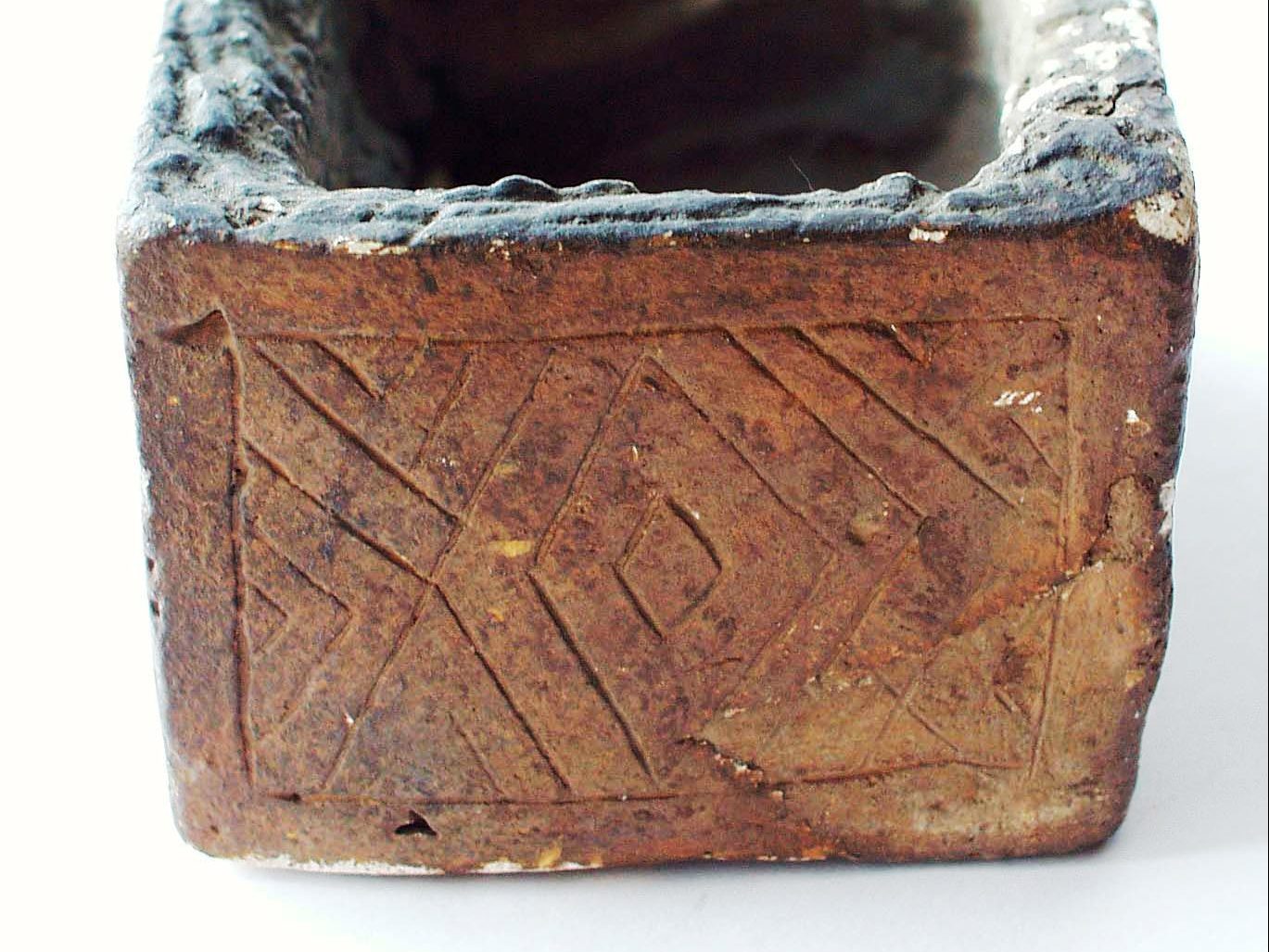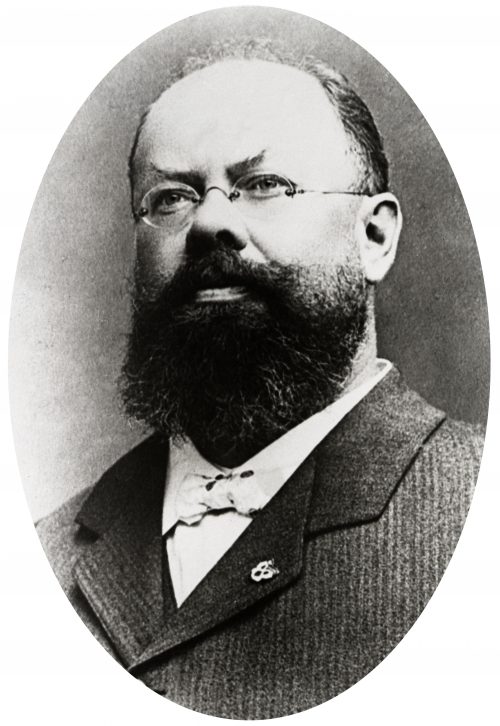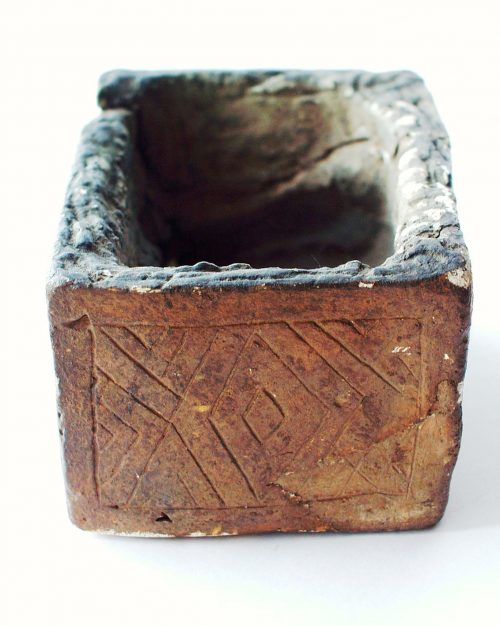The focus on the Moravian-East Austrian Group (MOG) of the late Neolithic in Moravia and Lower Austria stems from the traditional scholarly interests of J. Kovárník. The MOG, which is the western branch of the Painted Pottery Culture (KMK) of the Middle Danube region, was defined by notary Jaroslav Palliardi (Fig. 1-2) in 1888. J. Kovárník participates in prospecting for rondels of the MOG Ia phase and settlements belonging to this group (MOG Ia-IIb/c phases) within the field of aerial archaeology in the territory of Moravia and he also cooperates with several Moravian archaeologists and analyses MOG assemblages consisting of technologically very advanced pottery. Red and yellow painted vessels with drawn decoration (Fig. 3) are characteristic of the earlier phase (late Neolithic), while the later phase (early Aeneolithic) features vessels painted white and red, or polished red and black (Fig. 4). Finds of anthropomorphic (Fig. 5) and zoomorphic statuettes and vessels with a strong cultic significance or unusual pottery shapes (Fig. 6) are quite characteristic of it. An important contribution to the study of the MOG is represented by analyses of finds of imported painted vessels from the earlier phase, MOG I or possibly MOG Ib, from the territory of Bohemia, as well as later find-assemblages from the later phase of the Painted Pottery culture (of the Danube type, but their painted decoration gradually disappeared) belonging to its local Bohemian group with the Horní Cetno and Prague-Střešovice phases.
CONTACT
doc. PhDr. Kovárník Jaromír, CSc.
e. jaromir.kovarnik@uhk.cz
t. +420 493 331 269










